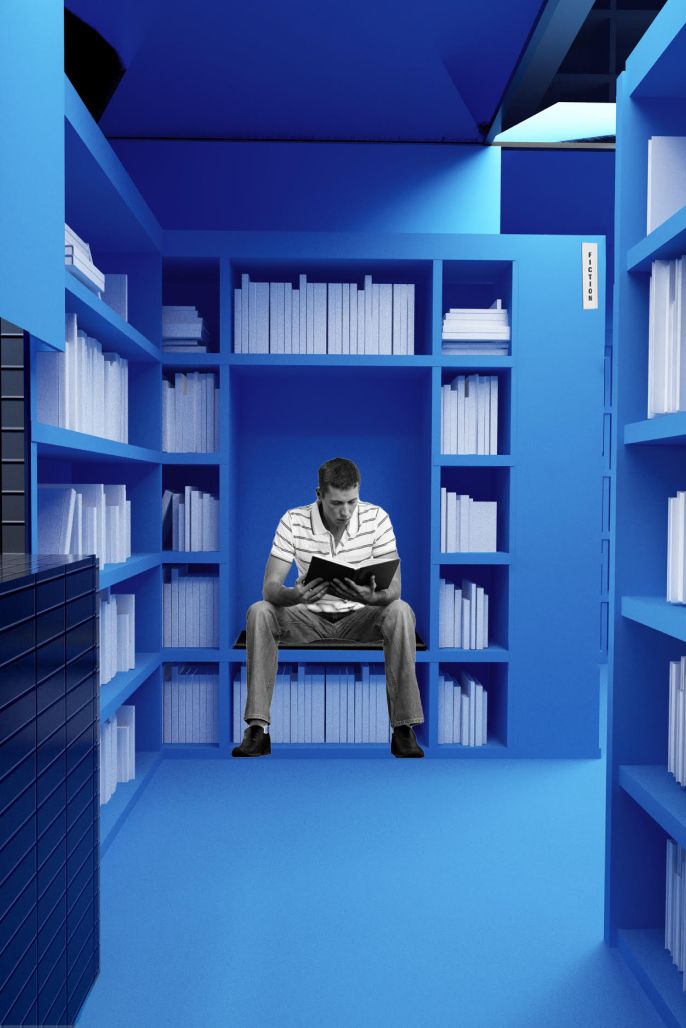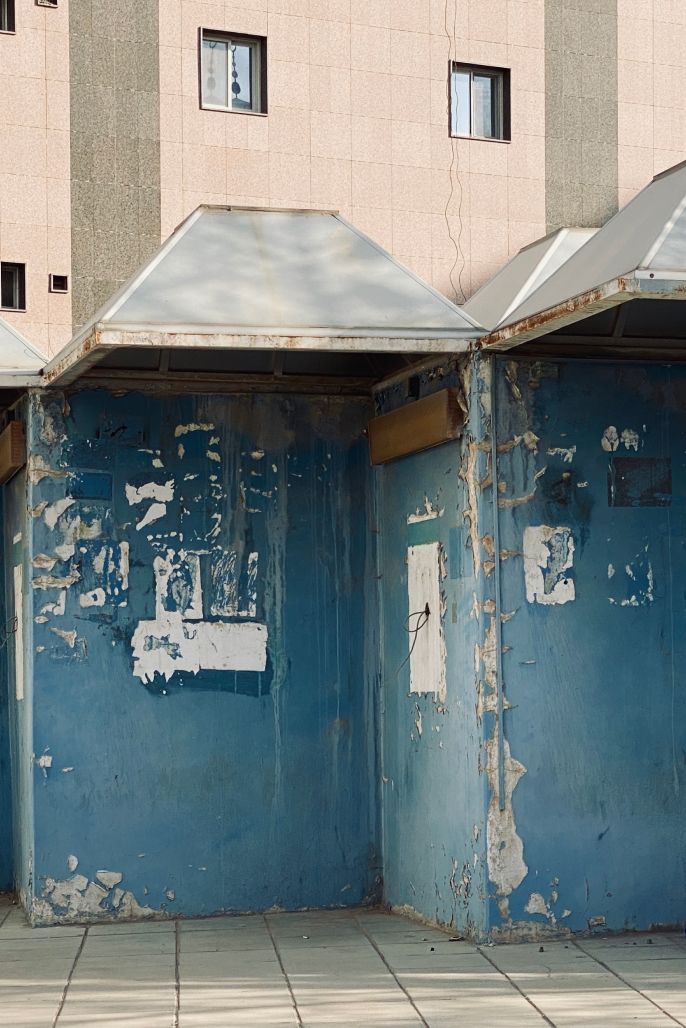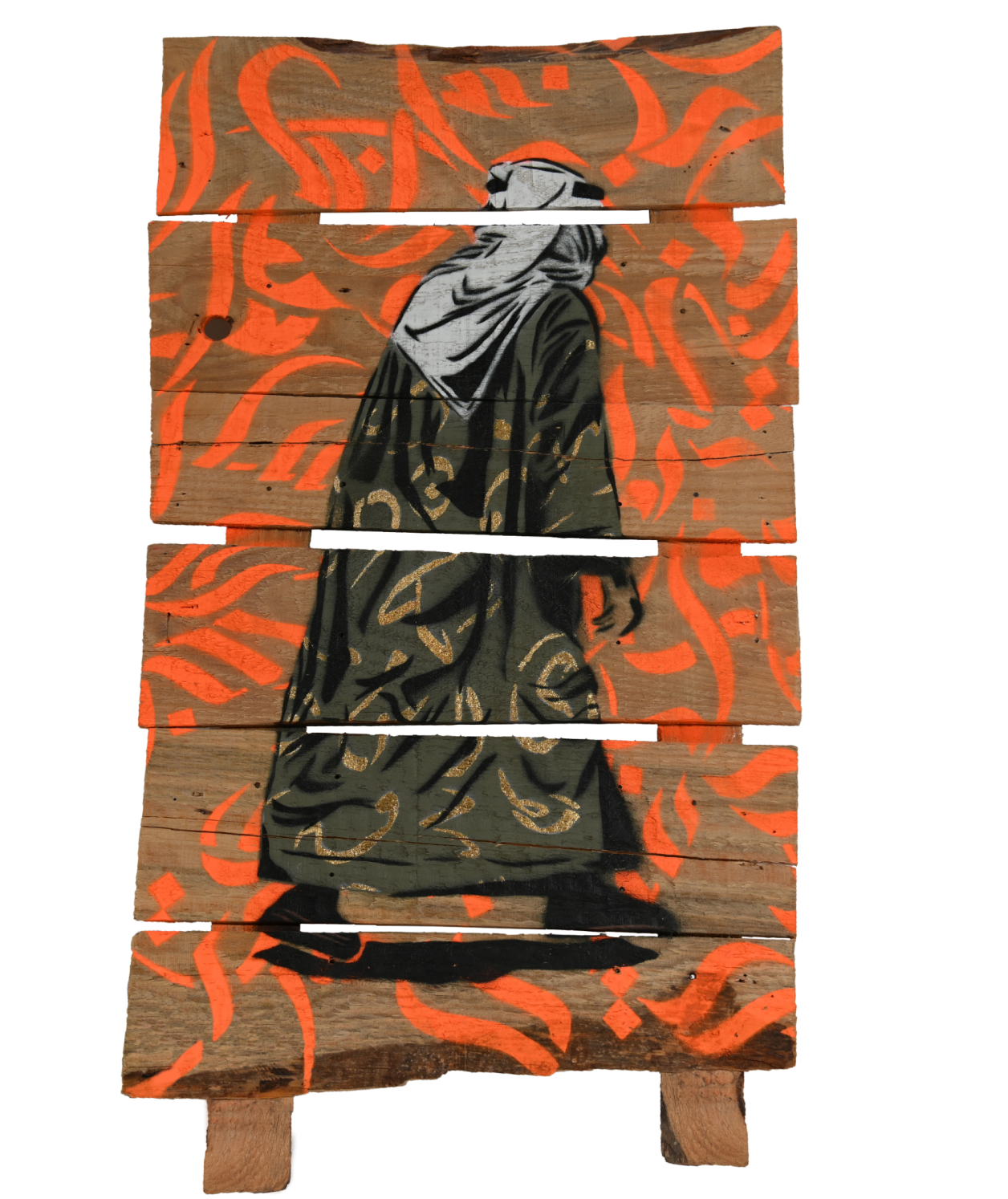Streets of Art
‘Heart Catheterization,’ by Abdullah Al-Othman. 2018. Materials: Aluminum foil (foil paper). Courtesy of the artist and Hafez Gallery.
Mehmet Murat Ildan (Turkish Poet and Playwright)
‘Let’s meet by the fountain with the jumping horses?’ ‘Remember to take a left at the Rainbow Roundabout.’ ‘When you see the mural depicting a child waving the flag, you will know that you are in the right place.’ Sewn into our cities’ urban fabric, we can find art that gives us joy, a connection with a place we call home, and the possibility to contemplate. These
are all examples of ‘Public Art.’ It takes many forms, from the monumental to the ephemeral. To many, it is the backdrop for their latest selfie or the perfect spot to gather with colleagues for a lunchtime picnic. The artworks integrated into our city’s streets do not just orientate us physically, but also help us place ourselves within our culture and community.
Public art, street art, civic art, urban art, guerrilla art, city festivals, and performances all described in a wide variety of forms, including murals, theatre, poetry, graffiti, posters, and sculpture. What links them all is that they are happening in public, not shut away in a gallery, behind a paywall but in a place shared with all bystanders.
It can become the stage set in our lives, a character in the memories we are creating. Strong associations in people's minds are born by
connecting with the city's art and design. Art can become a vital part of a city's identity; some would describe it as the ‘cities'calling card to the World'. What would Paris be without the Eiffel Tower? Can you name the town, which is home to Anish Kapoor's mirrored cloud gate? But cities are not just made of landmarks. Still, they can provide a complicated story, such as the traditional artisanal screens and doors, which present the rich heritage identity of Jeddah's Al-Balad. The artworks can tell a whole country's shared ideas and values of a place. To this day, the
Statue of Liberty provides the opening message to the World from the USA through one artwork. The idea that public art is just a picture on the wall or a shiny symbol for city status is limiting. Public art has shown to be a powerful tool in solving challenges within our communities. Art in a public space can open up conversations and connect people precisely because it is open to a broad audience. It has proved to provide positive benefits in education, health, and crime prevention.

In 2020 Ithra's Tanween Creative Space Challenge winning entry by Raghad Al-Ahmad proposed transforming the neglected telephone booths in Al-Malaz district into micro libraries.

In 2020 Ithra's Tanween Creative Space Challenge winning entry by Raghad Al-Ahmad proposed transforming the neglected telephone booths in Al-Malaz district into micro libraries.

In 2020 Ithra's Tanween Creative Space Challenge winning entry by Raghad Al-Ahmad proposed transforming the neglected telephone booths in Al-Malaz district into micro libraries.
Public art can provide a knowing sense that a place is cared for and loved. Showing a site is important enough to be a location for art has the power to reverse the feelings of danger and, in turn, create a real reduction of crime and violence. Public art can provide that needed sense of exposure to a watchful eye. However big or small, such a lasting mark shows the effect of bringing attention to a blighted neighborhood—deterring the window-breaker, perhaps, from smashing that window, for fear that the mural-maker may walk past. In some cases, artists use the same elements that signal redundancy in spaces. In 2020 Ithra's Tanween Creative Space Challenge winning entry by Raghad Al-Ahmad proposed transforming the neglected telephone booths in Al-Malaz district into micro libraries.
The project inspires new functions for the redundant facilities while at the same time work as mini research centers to be a platform for the community to identify new areas to re-imagine. In 2018, artist Abdullah Othman wrapped historical buildings in Jeddah, Khobar, and Al-Ula with tin foil in his work titles 'Heart Catheterization' in an even more dramatic fashion. These pieces were symbolic gestures to the buildings' frozen state and the absurdity of defying change in life. They highlighted that these streets are brought to life by the people who have lived— and do live there— behind the fading facades. That however much we try to preserve the past, the community continues to change.

In 2020 Ithra's Tanween Creative Space Challenge winning entry by Raghad Al-Ahmad proposed transforming the neglected telephone booths in Al-Malaz district into micro libraries.
Though not a substitute for a neighborhood's needed infrastructure improvements, public art can be an essential part of the revitalizing process. A public art project can participatory, involving the entire community's stake in social and physical change. Creating a participatory public art project, such as a group mural-making or collaborative brainstorm session, charges the neighborhood to become collaborators in the art-making.
If people have a stake in the process, then they are more likely to care. This 'care' became a 'joy' in projects such as the Market 2.0, Khobar as the giant mural across the vegetable market site made a destination good enough to celebrate National Day. The artwork unified the farmers, the fruit sellers, brought in new artisans to sell their goods and became a space to perform and celebrate. It was able to bring a new community to an old one.

Abdullah Othman wrapped historical buildings in Jeddah, Khobar, and Al-Ula in with tin foil in his work titled 'Heart Catheterization’. (2018)
Even in the guerrilla art of flyposting, graffiti, and stenciling, we can see the transformative power of public art. Artists such as Banksy, with his satirical expressions on modern life, El Seed unifying a whole neighborhood with Arabic typography have taken street art mainstream. They are turning urban streetscapes into destinations. As people search out the often witty and graphical expressions, it makes them look at the street afresh. A new generation of city explorers 'wander' in search of artistic inspiration, with every step becoming more familiar with the urban environment. Their popularity has driven their many followers to more traditional venues for art, as they take the language of the street into the gallery.
The roads of Khobar have certainly provided the window to new audiences for graffiti Saudi artist Zeinab Al-Mahoozi. Using spray paint and stencils, she creates images of people doing daily activities taken from candid photos. Zeinab, with permission, graffities onto the walls surrounding the neighborhood the life of the community and people there—even when they are not.
So next time you walk around your neighborhood streets, look out for those artistic expressions and creative designs that are changing your experience. If you don't see any, then maybe you have found a new blank canvas to inspire your community.
Written by Robert Frith, Creative Director, Idea Lab at Ithra


